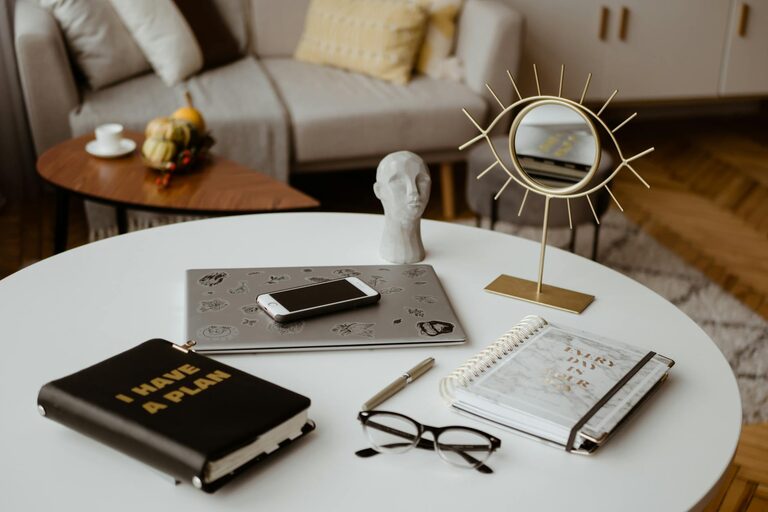
Creating a workspace that feels uniquely yours can greatly improve your focus and overall productivity. Whether you work from home, in an office, or a combination of both, personalizing your environment helps reduce stress and make your daily tasks more enjoyable. Here are some simple, practical ideas to customize your workspace without sacrificing professionalism or clutter.
Why Personalize Your Workspace?
Before diving into tips, it’s worth understanding why personalization matters. A workspace tailored to your preferences can:
– Increase comfort and reduce distractions
– Boost motivation and creativity
– Create a pleasant atmosphere for long work hours
– Reflect your personality, making your workday feel more fulfilling
Now let’s explore how you can make your workspace truly yours.
1. Add Personal Touches with Decor
Personal decor adds warmth and character to your desk or room. Consider these ideas:
Photos and Art
Displaying family photos, favorite artwork, or inspirational quotes can make your space inviting. Choose frames that match your desk style or use a bulletin board to switch out prints regularly.
Plants
Adding greenery brings life to any workspace. Small potted plants like succulents or air plants require minimal care and improve air quality.
Meaningful Objects
Place items with sentimental value, like souvenirs, a favorite mug, or a cute figurine, to remind you of good memories or motivations.
2. Organize Efficiently with Stylish Storage
Clutter can hinder focus, so organizing supplies neatly is key. Use stylish storage solutions that suit your taste:
– Desk organizers: Keep pens, notebooks, and gadgets tidy in acrylic or wooden trays.
– Drawer dividers: Separate items in desk drawers to avoid a jumble.
– Shelving: Display books, binders, and decorative objects without overcrowding your desk.
Not only does organization clear space, but attractive storage pieces also enhance your workspace’s aesthetics.
3. Customize Your Lighting
Good lighting reduces eye strain and improves mood. Here are ways to adjust lighting in your space:
– Task lamps: Adjustable desk lamps let you focus light where needed.
– Ambient lighting: Soft LED strip lights or fairy lights create a relaxed atmosphere.
– Natural light: Position your desk near windows if possible to enjoy daylight, but use blinds or curtains to control glare.
Experimenting with lighting colors and intensities can personalize how your space feels throughout the day.
4. Choose Comfortable and Stylish Furniture
Your workspace comfort starts with furniture that fits your body and style preferences:
– Ergonomic chairs: Support your posture with adjustable chairs tailored to your needs.
– Desks: Find desks with enough space for your equipment and personal items.
– Accessories: Add cushions, footrests, or wrist supports in fabrics or colors you like.
Comfort promotes longer productivity periods and reduces physical strain.
5. Personalize Your Digital Workspace
Today, much of our work happens on screens, so don’t forget your digital environment:
– Desktop backgrounds: Select calming or motivating images for your computer wallpaper.
– Browser themes: Choose color schemes that are easy on your eyes.
– Organize files: Keep digital folders orderly with a naming system that makes sense to you.
Customizing your digital tools complements your physical space in making work feel less routine.
6. Incorporate Scent and Sound
Senses like smell and hearing affect mood and focus, so consider these simple additions:
– Essential oil diffusers or candles: Scents like lavender or citrus can create a soothing atmosphere.
– Background music or white noise: Use headphones to listen to instrumental music or ambient sounds that help concentration.
Choose subtle options to avoid over-stimulation or distraction.
7. Keep It Simple and Flexible
While it’s tempting to add many personal items, simplicity often works best. Here are a few guidelines:
– Avoid overcrowding your desk—leave space to work comfortably.
– Use multipurpose items that combine function and style.
– Rotate personal items occasionally to keep the space fresh.
– Maintain flexibility so your workspace adapts to changing needs.
Balancing personalization and organization keeps your environment welcoming yet practical.
Final Thoughts
Personalizing your workspace doesn’t require a complete redesign. Small changes like adding favorite objects, choosing comfortable furniture, or adjusting lighting can create a more enjoyable and productive work area. Remember, the goal is to make your workspace feel positive and inspiring while supporting your day-to-day tasks.
Take some time this week to try one or two of these ideas. You might be surprised at how much of a difference a personalized workspace can make!
